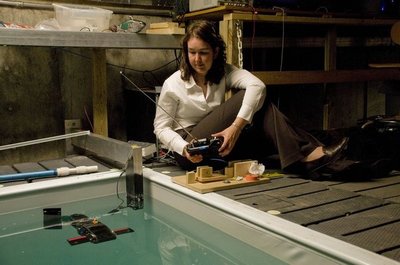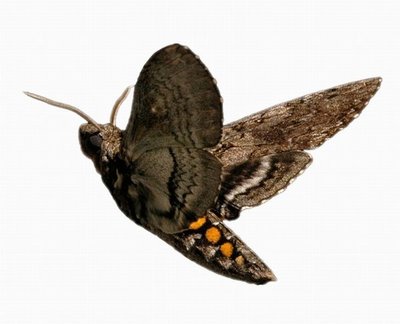September 30, 2010
UW leading $7.5 million study of animal flight and aerial vehicles
The Office of Naval Research has awarded a five-year, $7.5 million grant to a multi-university consortium led by the UW. The goal of the project is to study birds, insects and bats in order to develop aerial vehicles that can adapt to obstacles and fly in unpredictable conditions — such as zooming through dense forests or landing on moving objects.
“Autonomous vehicles currently have to fly in open spaces or in very controlled environments,” said principal investigator Kristi Morgansen, UW associate professor of aeronautics and astronautics. “We’re trying to make them more effective at operating in environments that are really cluttered, that are low-light or around other moving objects.”
Today, the unpiloted vehicles that operate in more challenging surroundings are remotely operated by humans. In the future, a flying vehicle operated without human direction could be smaller, lighter and have faster response times, Morgansen said. A truly autonomous vehicle would also be cheaper to operate and quicker to deploy in situations such as disaster relief.
With the aim of creating that future, the new project will investigate how animals sense their surroundings and use that information to control their movement. The researchers will also look at balancing short-term navigation, such as avoiding obstacles or countering gusts of wind, with long-term goals, such as reaching a final destination.
“Biological organisms solve these problems fairly well, and they can do it in a lot of operating parameters that we just cannot do with engineered systems,” Morgansen said. “Biological systems have very simple sensors, but they have lots of them. How do they use them? Is this something we can leverage for engineered systems?”
The multi-institutional team includes researchers at the UW, Boston University, the University of Maryland and the University of North Carolina at Chapel Hill. The UW’s share of the grant is $1.96 million. Research groups at all four institutions are working at the intersection of engineering and biology.
At the UW, Morgansen has built robotic fish and studied schools of fish to understand how they navigate underwater. Tom Daniel, a UW professor of Biology who uses electronic sensors to learn how moths detect and respond to their surroundings, also is involved in the research.
“Our lab works on how animals use many types of sensor information — both visual and mechanical sensing, in terms of gyroscopes and position-sensing organs — and how they meld all that information in their nervous system to enable really fast sensing and control,” Daniel said.
At Boston University, research includes studying artificial intelligence and decision-making, as well as learning how bats behave when they are flying among trees. At the University of Maryland, projects include studying how bees adapt to changing wind conditions, and developing sonar sensors for aerial vehicles. At the University of North Carolina at Chapel Hill, biologist Tyson Hedrick, a former postdoctoral researcher in Daniel’s lab, studies flight in organisms ranging from insects to birds.
The UW will host a national workshop next summer on bio-inspired engineering with a focus on flight. Other partners will host workshops in future years.
The grant is awarded through the Office of Naval Research’s Multidisciplinary University Research Initiative program, which funds basic research that has the potential for both commercial and defense applications. That program is restricted to academic institutions, but Morgansen says Pacific Northwest aerospace companies will likely be involved in some capacity.
“This is a basic research project, so all of the results will be public,” Morgansen said. “I imagine the tools we’re developing will be of interest to the aerospace industry.”


